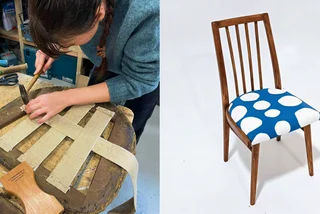The evening of April 30 is Čarodějnice in the Czech Republic, when effigies of witches are burned in bonfires to mark the end of cold weather. Prior to the Covid pandemic and the cancelation of public events, at one time there were so many bonfires in the Czech Republic that heat-sensitive satellites could see them from space.
The event is known in English as Witches Night, or Walpurgis Night, and in recent years has become something like the American holiday Halloween, with children dressing up in witch costumes, while adults enjoy fire-cooked sausages and beer.
Unfortunately, there will be no such public celebrations this year. Police spokesman David Schön confirmed to MfD that no large public events had been authorized for April 30 anywhere in the Czech Republic.
“The Health Ministry does not plan any special conditions for events related to Čarodějnice. The current extraordinary measures will be followed,” Health Ministry spokeswoman Jana Schillerová told daily Mladá fronta Dnes (MfD).
This doesn't mean the holiday is canceled entirely: gatherings may take place as long as they are limited to people who reside together or to groups of no more than two people who do not reside together. While up to 15 people can be at weddings or funerals, the celebration of Witches Night doesn’t fall into this category. Neither does burning witches qualify as a peaceful political demonstration or a religious ceremony.
Bonfires should take place only on private property as it is not permitted to make a fire of any kind in most parks or nature areas outside of a few designated grilling areas, and even there fires should be restricted to grills.
Firefighters, though, state that fires in home gardens often pose more risk than large organized public ones. People planning large events have to coordinate safety measures with authorities in advance.
Nicole Studená from the General Directorate of the Fire and Rescue Service said people often leave bonfires unattended, which can lead to the fire spreading. She added that weather also plays a big role, with fires spreading faster in dry areas. “Strong wind is dangerous, as it blows hot coals around and these can easily catch fire in dry grass, for example,” Studená told MfD.
One public event has been publicized on Facebook, but it is organized by Chcípl PES – Otevřeme Česko, a group that has been actively opposing the Czech government’s restrictions on businesses such as restaurants and pubs.
Prague 11 will celebrate the holiday with a photo exhibition that runs until May 23, looking back at the celebration held in 2019. It will be in the outdoor area of Chvalský zámek in Horní Počernice.
This will be the second year in a row that large Čarodějnice gatherings are canceled due to the pandemic. It was also canceled in 2018 due to drought. Some public fires took place in 2019, but under strict supervision of firefighters. People were discouraged in 2020 from having private fires due to drought, but this year drought is not a concern due to ample rain recently.

The idea behind Čarodějnice goes back to pagan times. In Czech it is also called Pálení čarodějnic (Burning of Witches) or Filipojakubská noc (Philip and Jacob’s Night). April 30 was allegedly when witches would gather on high mountains. Fires were built on hills to ward off them off, as the smoke would drive the witches away. In Germany, the event is called Walpurgisnacht, which refers to the eve of the feast of St. Walpurga, who can be called on the fight infestations, rabies, and witches.
The burning of the fire is not meant to symbolize the burning a witch, but in modern times a broom or something similar is dressed up as an effigy and burned in the fire. The event is also sometimes now confused with the drowning of Morana, another event with Pagan roots that goes marks the end of winter. This event takes place two weeks before Easter or on March 20, depending on local traditions.












 Reading time: 3 minutes
Reading time: 3 minutes 






























